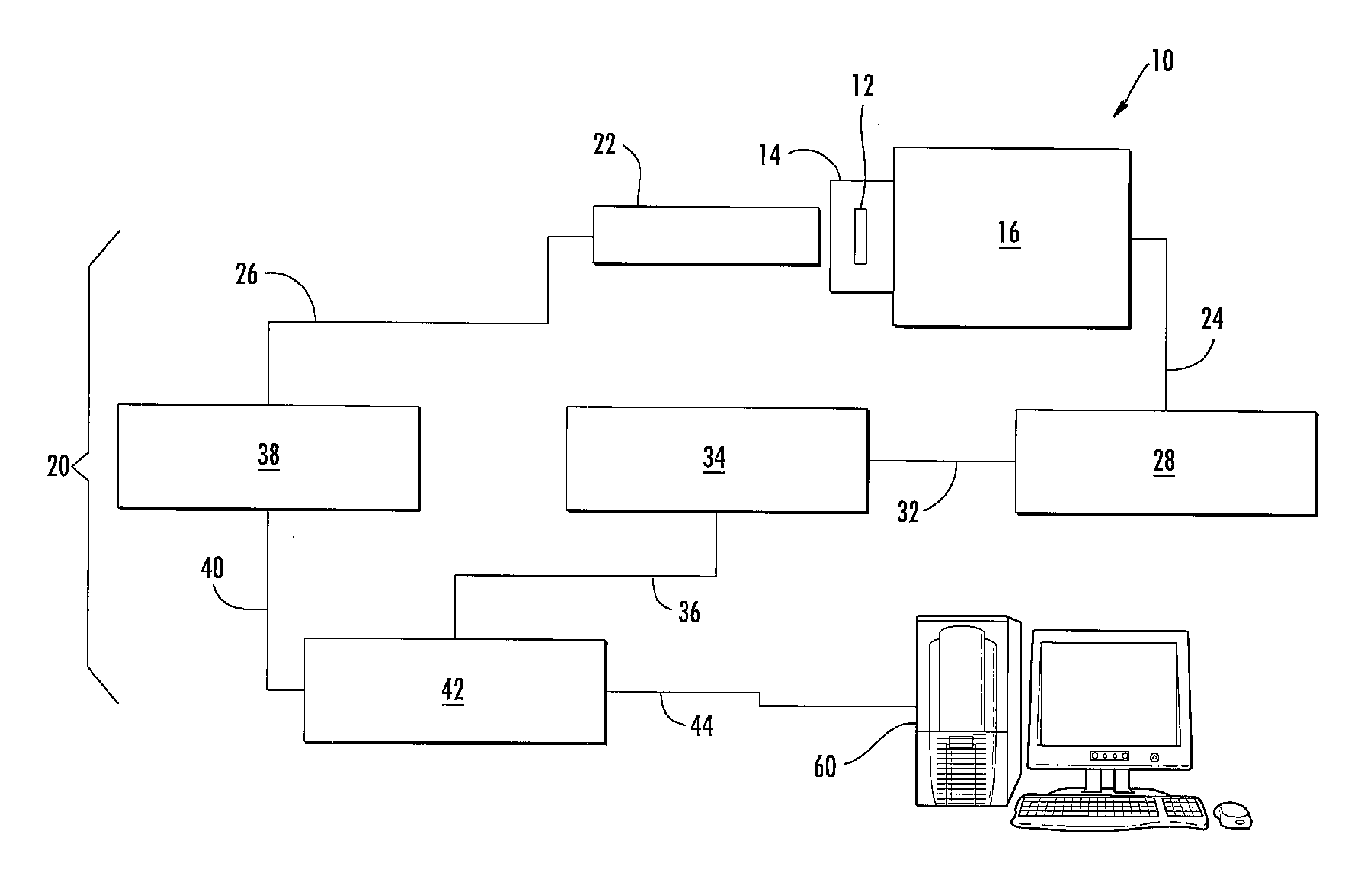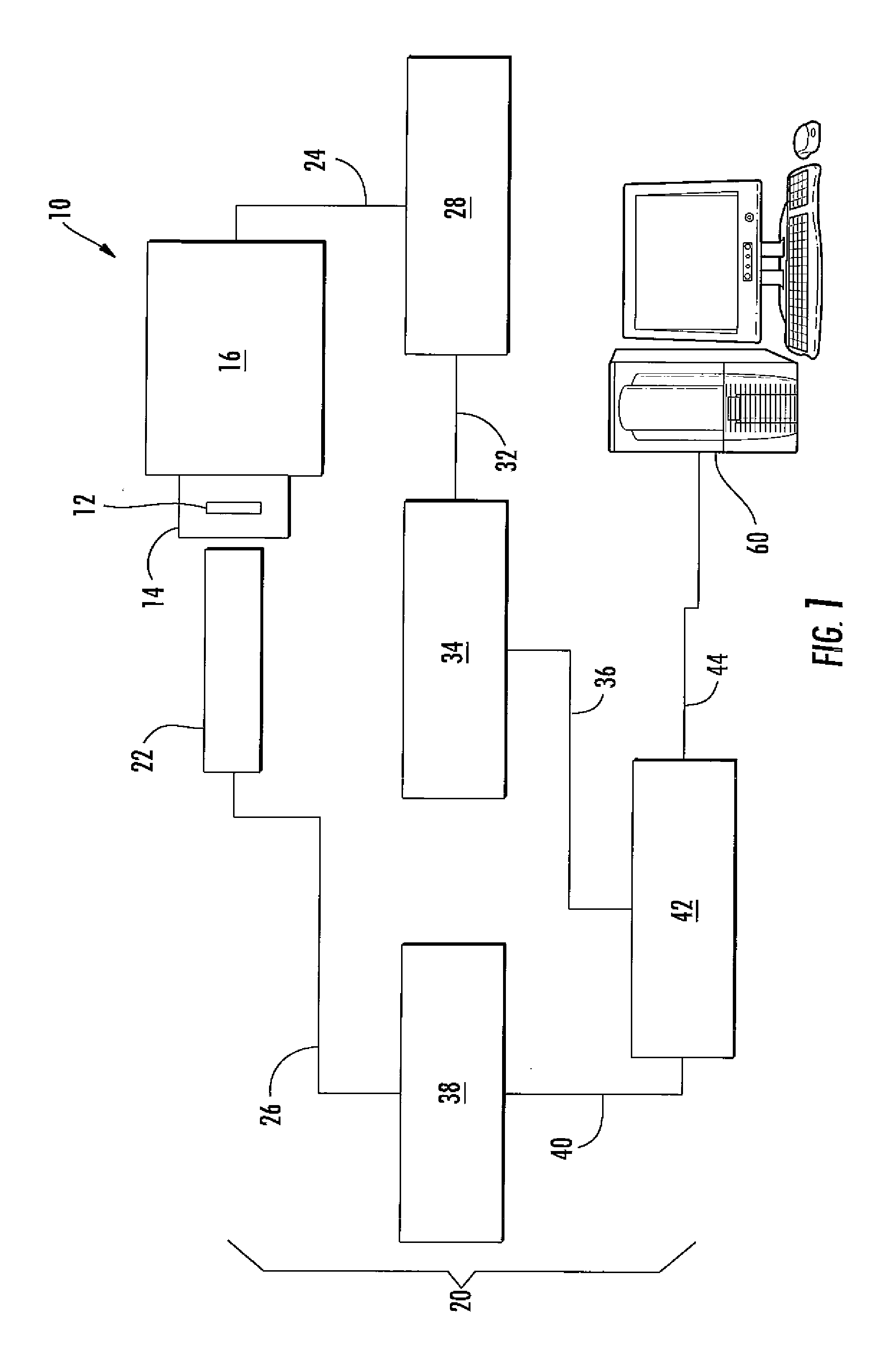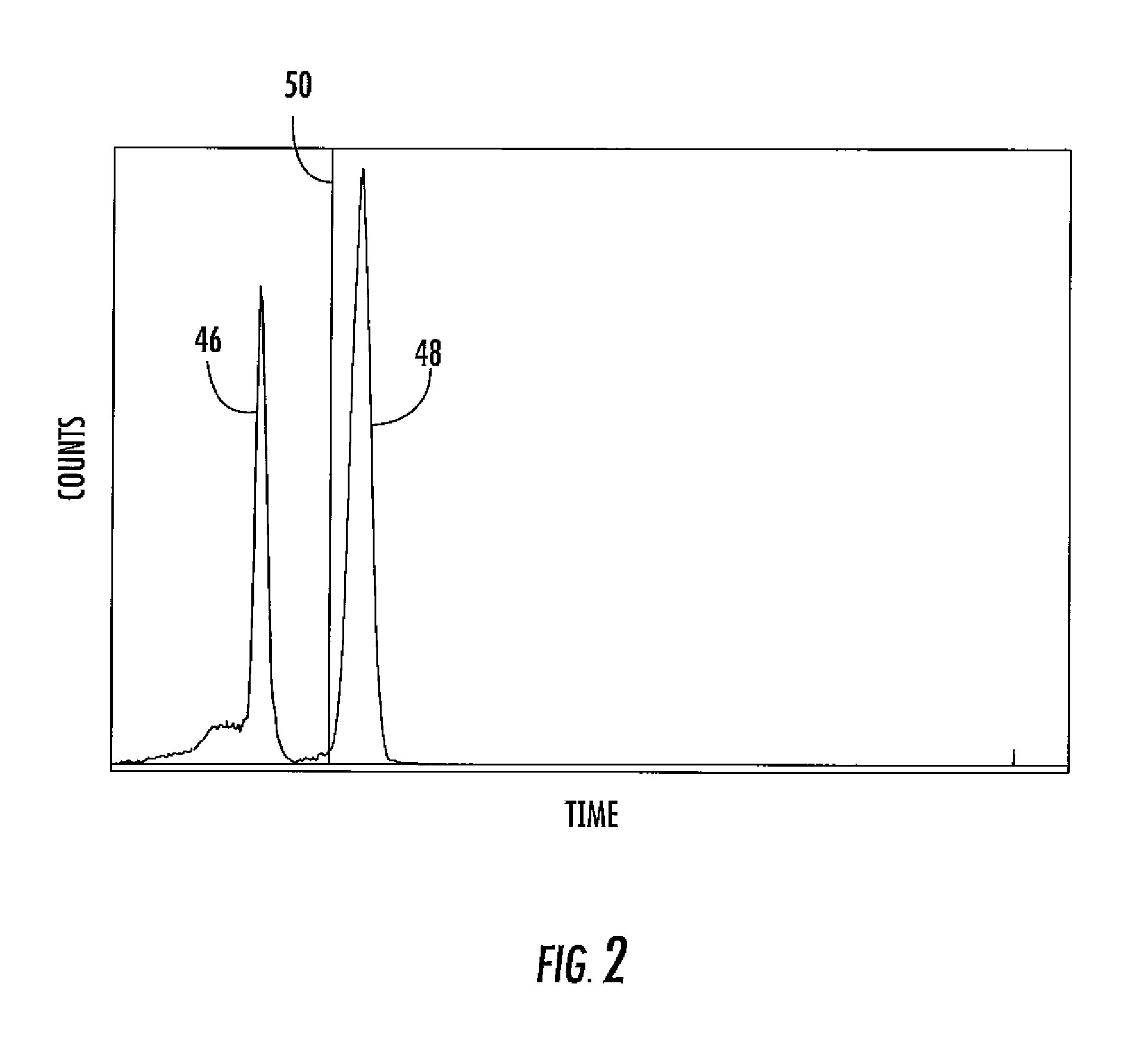System and method for assaying a radionuclide
a radionuclide and assaying technology, applied in the field of system and method for assaying a radionuclide, can solve the problems of difficult to distinguish low energy gamma emission from other compton scattering events, and achieve the measurement of these alpha emitters
- Summary
- Abstract
- Description
- Claims
- Application Information
AI Technical Summary
Benefits of technology
Problems solved by technology
Method used
Image
Examples
first embodiment
[0031]FIG. 4 provides exemplary graphs of gated 62 and un-gated 64 outputs of the multi-channel analyzer 42 shown in FIG. 1 in the presence of 226Ra according to the present invention. In this particular embodiment, a PERALS spectrometer is used as the liquid scintillation detector 16 and set to detect alpha emissions, and a high purity germanium (HPGe) low energy photon spectrometer (LEPS) is used as the gamma detector 22. As shown, the un-gated output 64 includes multiple pulses produced by gamma emissions from other radionuclides or other background radiation present in or around the sample 12. As a result, the specific gamma emissions produced by daughter isotopes of 226Ra are difficult to reliably distinguish from the other background emissions in the un-gated output 64. In contrast, the coincidence circuit 20 allows the system 10 to effectively ignore the background emissions to reliably detect the gamma emissions that coincide with the alpha emissions produced in the 226Ra de...
second embodiment
[0033]FIG. 6 provides exemplary graphs of gated 62 and un-gated 64 outputs of the multi-channel analyzer 42 shown in FIG. 1 in the presence of 226Ra according to the present invention. In this particular embodiment, a PERALS detector is again used as the liquid scintillation detector 16 and set to detect alpha emissions; however, a bismuth germanate (BGO) detector is used as the gamma detector 22. As in the previous embodiment, the un-gated output 64 again includes multiple pulses produced by gamma emissions from the other radionuclides or other background radiation present in or around the sample 12, and the lower resolution of the BGO detector makes reliable detection of the specific gamma emissions produced by daughter isotopes of 226Ra even more difficult. However, the coincidence circuit 20 again allows the system 10 to effectively ignore the background emissions to reliably detect the gamma emissions that coincide with the alpha emissions produced in the 226Ra decay chain. As ...
third embodiment
[0034]FIG. 7 provides exemplary graphs of gated 62 and un-gated 64 outputs of the multi-channel analyzer 42 shown in FIG. 1 in the presence of 226Ra according to the present invention. In this particular embodiment, a PERALS detector is again used as the liquid scintillation detector 16, and a high purity germanium (HPGe) low energy photon spectrometer (LEPS) is again used as the gamma detector 22. However, the single channel analyzer 28 is set to detect or pass beta emissions from the 226Ra decay chain to the coincidence circuit 20. As shown in FIG. 7, the coincidence circuit 20 again allows the system 10 to effectively ignore the background emissions to reliably detect the gamma emissions that coincide with the beta emissions produced in the 226Ra decay chain. As shown in FIG. 7, the coincidence circuit 20 thus substantially reduces the noise from the background emissions so that the characteristic gamma emissions produced in the 226Ra decay chain are readily identifiable in the i...
PUM
 Login to View More
Login to View More Abstract
Description
Claims
Application Information
 Login to View More
Login to View More - R&D
- Intellectual Property
- Life Sciences
- Materials
- Tech Scout
- Unparalleled Data Quality
- Higher Quality Content
- 60% Fewer Hallucinations
Browse by: Latest US Patents, China's latest patents, Technical Efficacy Thesaurus, Application Domain, Technology Topic, Popular Technical Reports.
© 2025 PatSnap. All rights reserved.Legal|Privacy policy|Modern Slavery Act Transparency Statement|Sitemap|About US| Contact US: help@patsnap.com



